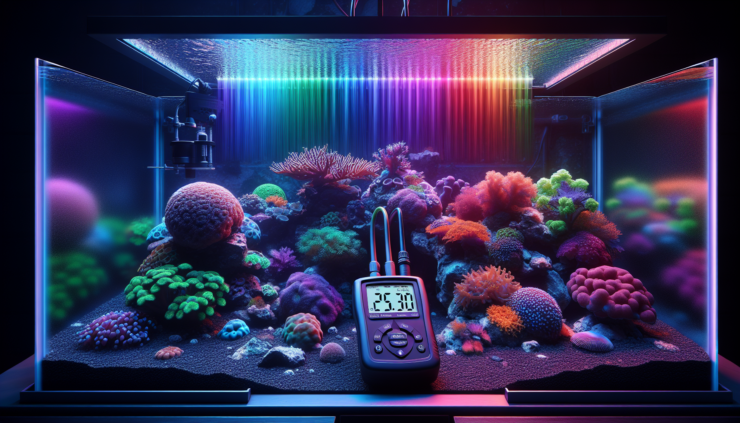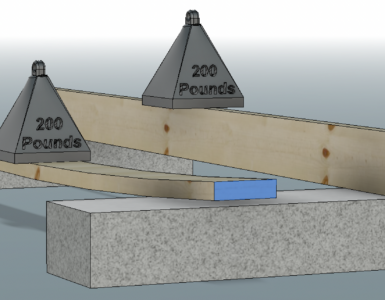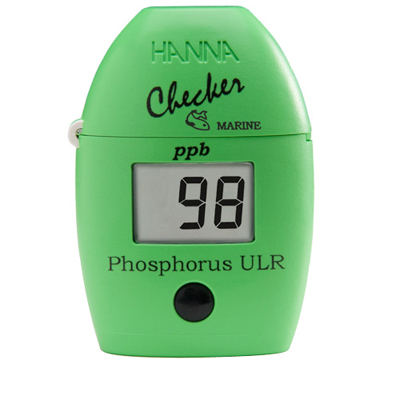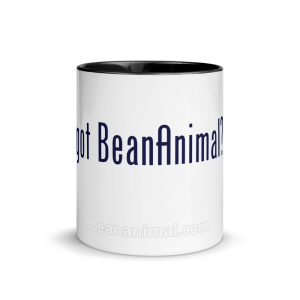Everyone around you is using a PAR meter to measure their lights. Coral vendors are posting PAR numbers, and light manufacturers are quoting PAR values. Buyers demand PAR measurements from vendors—both for fixtures and corals—and hobbyists are comparing PAR numbers. But do these numbers convey anything truly useful? This article aims to shed light on the subject.
Understanding PAR and Its Limitations
PAR (Photosynthetically Active Radiation) measures the amount and intensity of light within the spectrum (400-700 nm) that corals use for photosynthesis. This range includes visible light from violet to red.
Herein lies the primary issue: PAR meters show the total intensity of light between 400 and 700 nanometers, but not all wavelengths within this range are equally beneficial for coral growth, coloration, or health. However, the problem compounds when the rest of the matter is considered. Read on…
Why PAR Measurements Are Misleading
Think of it this way: knowing the total calories in your diet doesn’t mean you’re getting the right nutrients. Similarly, two light sources with the same PAR can have different effects on corals if their spectra are different. So, it’s not just about the intensity of the light, but the quality and composition of the light spectrum. In fact, a fixture with lower PAR and a more suitable spectrum may promote better coral growth than a fixture with higher PAR and a less suitable spectrum.
Factors Leading to Differing PAR Readings
From a testing standpoint, several factors cause significant variations in PAR readings, making them unreliable on their own. Differences in meter calibration, sensor sensitivity to different wavelengths, and whether you’re measuring in air or underwater all contribute to inconsistent results. Minor variations in sensor angle, water turbulence, and reflections also play significant roles—small differences can lead to significant disparities in readings, such as 350 PAR versus 410.
The Misapplication of PAR in Reef Aquariums
Considering these challenges and the fact that PAR measurements are not as precise as believed, coupled with the understanding that corals lack a standard manual and each species has unique light intensity and spectral requirements, PAR becomes a rather unreliable metric. Furthermore, in addition to the significant issues already mentioned, PAR readings are further undermined by the diverse spectral settings used by aquarium owners, rendering them uncorrelated between systems unless measured under identical conditions with the same equipment. Ask yourself, what does that 450 reading you took (that could really be 420 or 470) mean in the context of someone else’s system with a different fixture and spectrum reading 390 (which could be 350 or maybe 410)?
Using PAR measurements alone to compare different light fixtures in reef aquariums is a fool’s errand. Spectral differences between lights profoundly affect coral health and growth, irrespective of their PAR values. Given the variability in PAR readings due to different meters and environmental settings and the differences in spectra, relying solely (if at all) on PAR numbers for choosing or comparing light fixtures is not advisable.
What is the PAR Meter Good For?
In a controlled setting, such as your own aquarium system, a PAR meter allows you to compare the overall light intensity across different spectral settings. This means you can assess how changing the spectrum affects the total light output, even though the meter doesn’t provide information on the suitability of those settings for coral health.
Consistent use of a PAR meter helps you monitor the output of your light fixtures over time. It can indicate when the light output starts to degrade, allowing you to make adjustments or consider replacing aging bulbs or LEDs before they impact coral health.
Despite the limitations of actual PAR values, a PAR meter can help map relative light intensity over the tank area at various depths. This mapping reveals hotspots where light intensity may be too high and areas lacking sufficient light. Using this data, you can adjust fixture height, positioning, or add supplementary lighting to achieve balanced illumination throughout the aquarium, promoting healthier coral growth.
A Quick Note!
The goal here was to keep things very simple and readable without getting into technical terminology or definitions. In the context of this article, when we refer to “PAR readings,” we are specifically discussing measurements of PPFD (Photosynthetic Photon Flux Density). PPFD quantifies the intensity of photosynthetically active light within the 400-700 nm wavelength range that reaches a specific surface area per unit time. PPFD is the value that is returned by your Apogee or similar meter.





Add comment